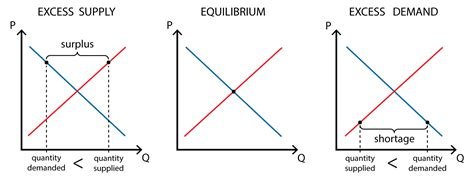Supply And Demand Principles In Cryptocurrency Markets
Principles of supply and demand in cryptocurrency markets
The cryptocurrency world has experienced rapid growth in the last decade, with many investors and traders meeting with digital currencies such as Bitcoin (BTC), Ethereum (ETH) and others. However, under the surface of this market, there is a complex interaction of supply and demand principles that can significantly affect their price movements.
What are supply and demand principles?
The principles of supply and demand refer to the underlying forces that boost the prices of goods and services in an economy. In the context of cryptocurrency markets, these principles manifest themselves in many ways, shaping the dynamics of purchase and sale. Understanding these concepts is crucial for investors, traders and market participants to navigate the complex world of cryptocurrencies.
The offer side: central banks and institutional investors

One of the main factors of price movements in cryptocurrency markets is the offer side, which involves central banks and institutional investors entering the market with a significant amount of capital. This influx of new players can lead to increased demand for digital currencies, increasing prices. For example, when a large central bank, such as the Federal Reserve from the US or the European Central Bank, announces plans to launch a cryptocurrency -backed stablecoin, it sends shockwaves through the market, causing price increases.
Demand side: investors and individual adoption
The other side of the coin is the demand side, which consists of individual, enthusiastic and potential adopters. As more people become aware of cryptocurrencies and their potential benefits, demand for digital currencies increases, increasing prices. This trend has been particularly pronounced in recent years as cryptocurrency adoption has expanded in various segments of society, including millennials, women and small entrepreneurs.
Price volatility: result of supply and demand imbalance*
Intersection of supply and demand principles can lead to significant price volatility in cryptocurrency markets. When there is an imbalance between the number of buyers and salespeople, prices tend to float madly. This imbalance may arise from several factors, including:
- Increased adoption : As more people become aware of cryptocurrencies, demand increases, leading to higher prices.
2.
- Feeling in the market : Changes in market feeling, such as optimism or pessimism, can influence price movements.
Examples of supply and demand imbalance*
Several remarkable examples demonstrate the impact of the principles of supply and demand on cryptocurrency markets:
- Bitcoin (BTC) : In 2017, Bitcoin experienced a significant price increase due to increased adoption by institutional investors such as Square (SQ) and microstrategy investment in BTC.
- Ethereum (ETH)
: During the 2020 Ethereum update release event, ETH prices increased as more developers began to develop their ecosystem, increasing the demand for cryptocurrency.
3.
Conclusion
The principles of supply and demand in cryptocurrency markets can have a significant impact on prices, leading to periods of extreme volatility. As the market continues to evolve, it is essential for investors, traders and market participants to remain informed about these underlying forces. Understanding how the principles of supply and demand interact, individuals can sail better in the complex world of cryptocurrencies and make more informed investment decisions.
